Shogun 2: Total War campaign impressions
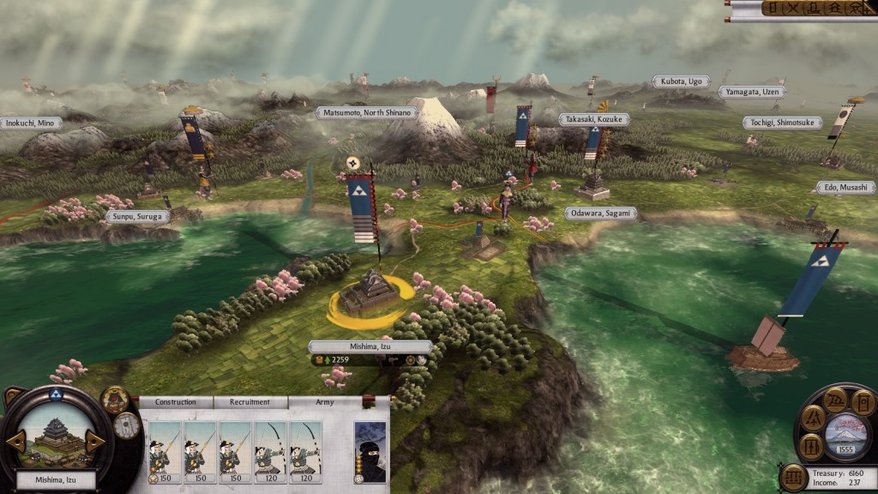
I recently met with Creative Assembly at their Horsham studio, where I tried my hardest not to dribble over the shoulder of one of their staffers as he walked me through the basics of Shogun 2: Total War. You can read my overall impressions in the next issue of PC Gamer, but I thought it'd be nice to throw up some details of what I saw on the day.
The demo came in three sections: the campaign map, a battle sequence, and some naval combat. So let's cap them in order.
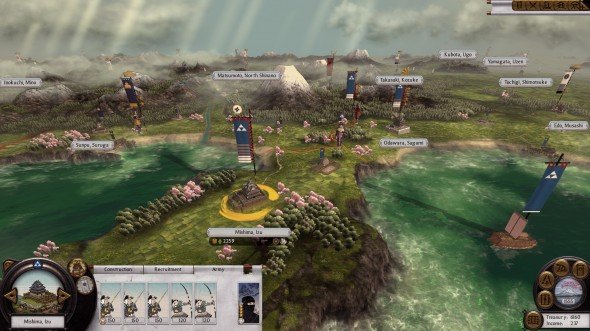
First up, the campaign map is really big . While it's only set over a single country, the scale is different to previous Total War games – in a sense, it's zoomed in, so the actual area of the map is pretty massive, and seemed comparable to, say, Napoleon.
Much of that map was undiscovered country. The graphical representation of this is lovely, with broad charcoal strokes on linen describing mountains and woods in fancy fashion, to give you a vague idea of the terrain. The landscape you've already discovered is, in complete contrast, 3D and very much alive. Waterfalls steam over cliffs, cherry blossom futters across the landscape from copses of trees, and Mount Fuji stands proud and immutable.
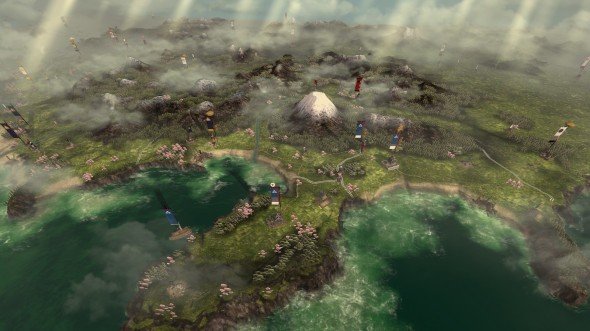
The CA staffer demonstrated a couple of the Hero units on the campaign map, the first being a glamorous Geisha girl. He ordered her to shmooze her way into an enemy army's encampment where she failed to assassinate the army's general. Fatal error. The second attempt, using a ninja hero character, was successful. Both attempts came with neat little animated movies to illustrate the execution of the orders.
These cheeky tactics pay off big-style when battle commences in earnest, as all of that general's levelled-up bonus-conferring abilities are lost to the army as his 2IC takes the reins. We also got a glimpse of the ninja's skill-tree, which enable him to become a specialist in certain activities. This is something that Heroes and Generals both get.
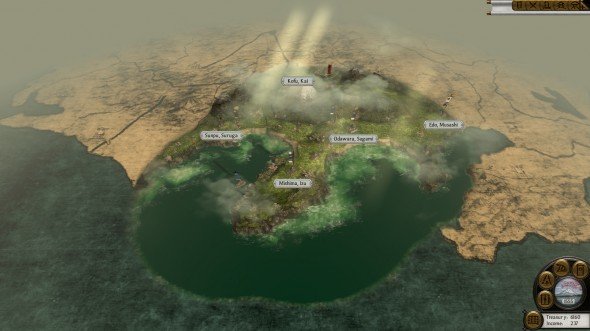
We then jumped into a full battle, which was tremendously atmospheric. It was night-time and the rain was hammering down. If you haven't seen it already, get on CA's walkthrough vid – it was the same battle. What's lost in the compressed video is the tremendous visual fidelity and sense of location and atmosphere. The rain changes direction constantly with the wind, sets up pools of mist in the low ground, and literally pours off buildings. There's some lovely shader-work in there which creates wet-state effects for the troops, so their armour properly glistens when the rain comes down. For the ebb-and-flow of the battle, I'll let the video do the talking.
The biggest gaming news, reviews and hardware deals
Keep up to date with the most important stories and the best deals, as picked by the PC Gamer team.
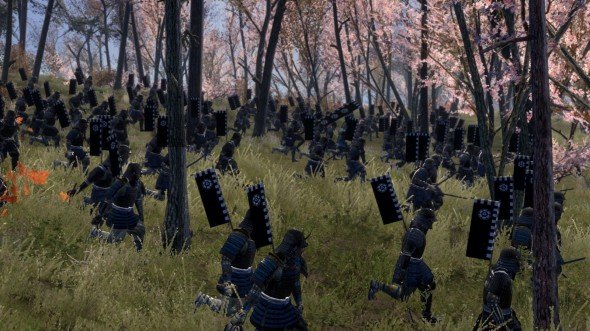
The final sequence we saw involved a little naval action. Warships of the Edo period didn't sail, so there's not a shred of canvas in sight. Instead, they were oar-powered coast-hugging behemoths, described as 'floating castles' packed with archers and melee troops. They'd rain arrows on opposing craft before grappling in for massive boarding actions. In many ways, they were like parcelled-up extensions of land combat, and in Shogun 2, they're ultimately more agile than the sail-powered ships of the west, as they don't rely on the whims of the wind.
A quick scan inland showed us a castle, Edo-period style. Here's a really big change from previous Total War games, as Japanese castles are largely alien compared to the western designs we're familiar with. Of tiered design and literally hewn out of mountain-tops, with all the implied might of geology behind them, there's absolutely no point in luzzing rocks at them from trebuchets (although fire-pots will shake up the inhabitants some). These sieges aren't about knocking down walls, they're about clever infiltration tactics. And in certain situations, I was told, the defenders might 'invite' enemy forces into these castles, perhaps by presenting a weak facing, before springing the trap. I have no idea how this is going to pan out in the final count, but it sounds thrilling – like Thermopylae up a mountainside? I can't wait to find out.
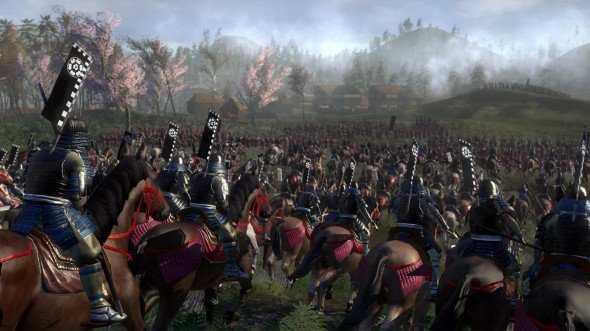

Al's games-and-tech quilling began on PC Gamer Specials magazine in the year 2000, before moving on to PC Format and then out into game development. In the last 23 years he’s reviewed a bajillion games and assorted pieces of hardware, spent 13 years in game dev, built PCs, dry-stone walls, and ebikes, and logged 1000 hours in Fallout 76. His current obsessions are tiny PCs and sledgehammering every single object in Dysmantle into its constituent parts.

